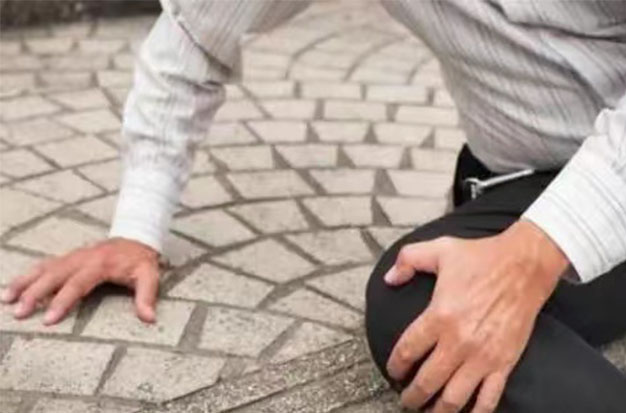
How Long to Recover After a Fall?
If you want to know exactly how long it will take to recover from a drop, it depends on the amount of impact of the drop. Your body has to create scar tissue to repair your damage. This process starts in about 24-48 hours and can last for several months, usually stopping around 4-6 months.
Even if you do your best to protect your bones, there is still a risk of falling and breaking your bones. People most commonly broken bones in the spine, hip, or wrist, but it is possible to break bones in other parts of the body, including ribs, upper arms, pelvis, collarbone, ankles, and feet. Regardless of the affected bone, recovery involves more than just healing the bone, but also the process of restoring physical strength and returning to day-to-day. So how long it takes to recover from a fall will depend on the location and severity of your injury.
First of all, we must understand that recovery is a good time to take steps to prevent further bone loss and avoid additional fractures. To prevent future falls and fractures, discuss developing an osteoporosis treatment plan with your healthcare provider. Check to make sure you are not taking medications that can affect your balance or cause your blood pressure to drop, as both of these medications can increase your risk of falling. Also, please check your vision and hearing.
This article will list some common fractures caused by falls. If you continue to read, you will have a clearer understanding of the time and precautions required for recovery from falls.
Read More: How to Prevent Ankle Pain After Running
Sprains and Strains
How long does it take for a sprain or strain from a fall to heal? After 2 weeks, most people with sprains and strains feel noticeably better. But it is very necessary to avoid strenuous exercise at this time, such as running if you have not fully recovered, you will risk further injury.
Severe sprains and strains can take several months to return to normal.
Sprains and strains are actually more optimistic and have a shorter recovery time than fractures.
Wrist Fracture
In most cases, it takes around 6 to 8 weeks to recover from a broken arm or wrist. Wrist fractures are common in people under the age of 75. Of course, it is not uncommon for young people to fracture their wrists due to falls, but in the short term, the recovery of young people is definitely better than that of old people. Women suffer more wrist fractures around menopause than at any other time. This may be due to bone loss that occurs during menopause, so it is more likely to cause wrist fractures when falling.
While simple wrist fractures are usually cured with a cast or splint, more complex fractures often require surgery. If your healthcare provider puts a cast or splint on you, you need to wear it for six to eight weeks. During this time, a physical therapist or physical therapist can teach you to exercise your hands, wrists, forearms, elbows, and shoulders. Doing this every day will help maintain strength and movement in your wrists, fingers, and arms.
After a broken wrist, you need help with your daily life. If the fracture occurs in your dominant arm, you may need help with tasks such as dressing, cooking, and brushing your hair. At least, it’s frustrating. For people who are frail or have other physical problems, a broken wrist can lead to disability.
If you are between the ages of 40 and 60, a broken wrist can be an early warning sign of osteoporosis. If you break your wrist, talk to your healthcare provider for a bone density test to find out if you have osteoporosis.
Broken Bones in the Spine
A spinal fracture takes between six and 12 weeks to heal. Spine fractures are also called vertebral fractures or compression fractures. If your spine is fractured, it can take weeks or more to heal. You may not need surgery, but you will need exercise and rest. In the first week after a fracture, you need more rest and less activity to heal. Soon you can rest less and become more active. This will help you regain your strength. It will also help you move around more easily. In fact, it’s important to increase your activity because too much rest can lead to bone loss.
Spine fractures can sometimes cause other side effects that may require treatment. These may include back muscle cramps or constipation. Don’t be too impatient or you may experience pain and fatigue.
In some cases, a vertebral fracture occurs without any noticeable pain. People can see these fractures on back X-rays. If you fracture your spine, you may need to take osteoporosis medication to prevent more fractures in the future.
Physical therapists, physical therapists (PT), and occupational therapists (OT) can help you learn safe ways to move. They can teach you exercises to help limit your kyphosis. These health care professionals can also help you learn to manage your pain. To learn some safety exercises to help the spine, see Moving and Protecting the Spine Safely.
At times, your healthcare professional may recommend that you temporarily use a back brace, jacket, or corset to support your spine while you heal. At first, you may need to wear it when exercising every day, when your back is tired or in severe pain. Braces can relieve pain by reducing motion in the affected area of the spine. It also allows you to return to normal activities more quickly and prevents kyphosis (curvature of the spine) from getting worse. As your back muscles get stronger, you’ll use the support less often. It’s important not to rely too heavily on spinal support, as prolonged use can keep you from improving muscle and bone strength.
To reduce your risk of vertebral fractures, you may need to avoid certain activities or change the way you do other activities.
Your healthcare provider may also recommend special procedures to stabilize the fracture if you continue to experience pain. For some people, these procedures can help relieve pain from a spinal fracture.
You can seek out a professional health team to help you specify a recovery plan. A team of health professionals typically consists of PTs, OTs, and other healthcare professionals in order to provide patients with a full recovery.
PT treats pain and discomfort in a variety of ways. These usually include exercises to keep the joints moving and the application of ice and heat. This treatment is especially important for relieving the muscle spasms and pain that often accompany spinal fractures. Additionally, a supervised exercise program that strengthens the back can help reduce pain and improve function. An OT can teach you techniques to help you move safely in your daily activities to reduce pain and prevent falls.

Broken Hip
Most people are able to return to work 4 weeks to 4 months after surgery. But it may take 6 months to 1 year for you to fully recover. Hip fractures tend to cause more problems than other fractures. Most people with hip fractures require surgery to repair them. Some people have problems with surgery and do not fully recover. Even after surgery, some people have difficulty walking again and have to use a wheelchair or walker for short or long periods of time.
If you break your hip, a physical therapist, physical therapist (PT), or occupational therapist (OT) can teach you exercises to help you get better and learn safe ways to move. Recovery from a hip fracture can take months. During the first few weeks of recovery, your activities will be limited. You may need to rely on others to shop, cook, clean, shower, or even dress. Being dependent on others can be disconcerting, especially when you’re used to being independent. Remember, this won’t last forever – you’ll get stronger, especially if you’re able to walk and rehab every day.
The best treatment for a hip fracture is to take steps to prevent another hip fracture. Since many fractures are caused by trips, slips, or loss of balance, you might want to stay home to prevent falls, participate in balance training, and learn to build muscle strength.
Several types of health professionals can help you recover from a broken bone. An orthopedic doctor can help repair your broken bone. Physiatrists (doctors who specialize in rehabilitation), physical therapists (PTs), and occupational therapists (OTs) use a variety of methods to help people with osteoporosis function fully after a broken bone.
Summary
In our daily lives, many falls are harmless, but some do cause serious injuries, such as broken bones or head injuries. These problems can make it difficult to move around, perform daily activities, and live alone. Therefore, when you are injured by a fall, be sure to seek professional medical help.





Average Rating